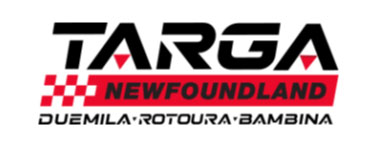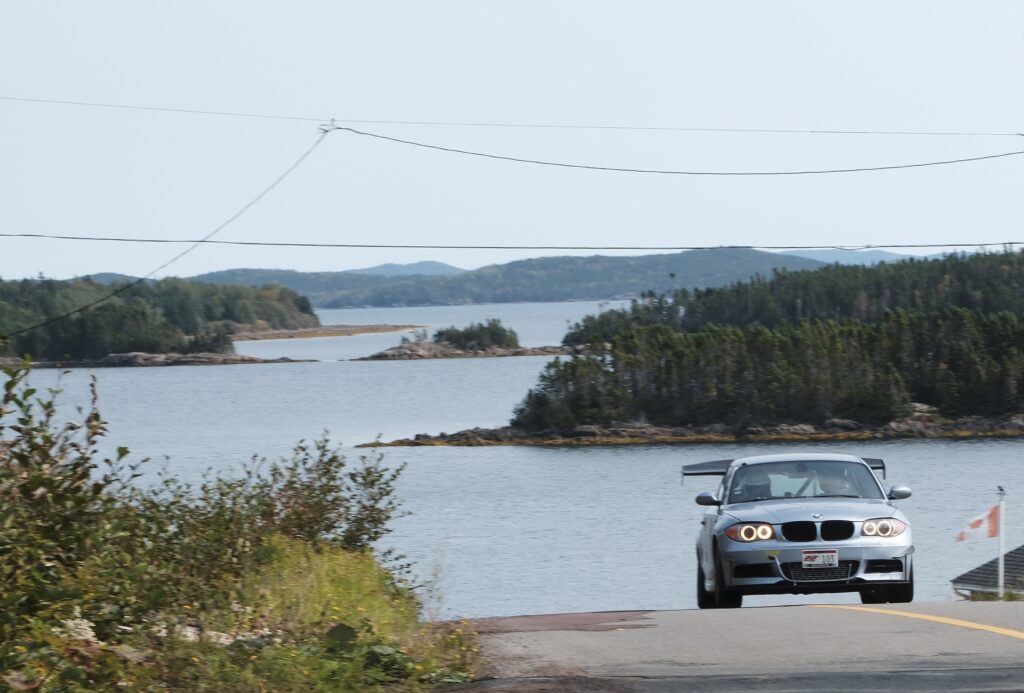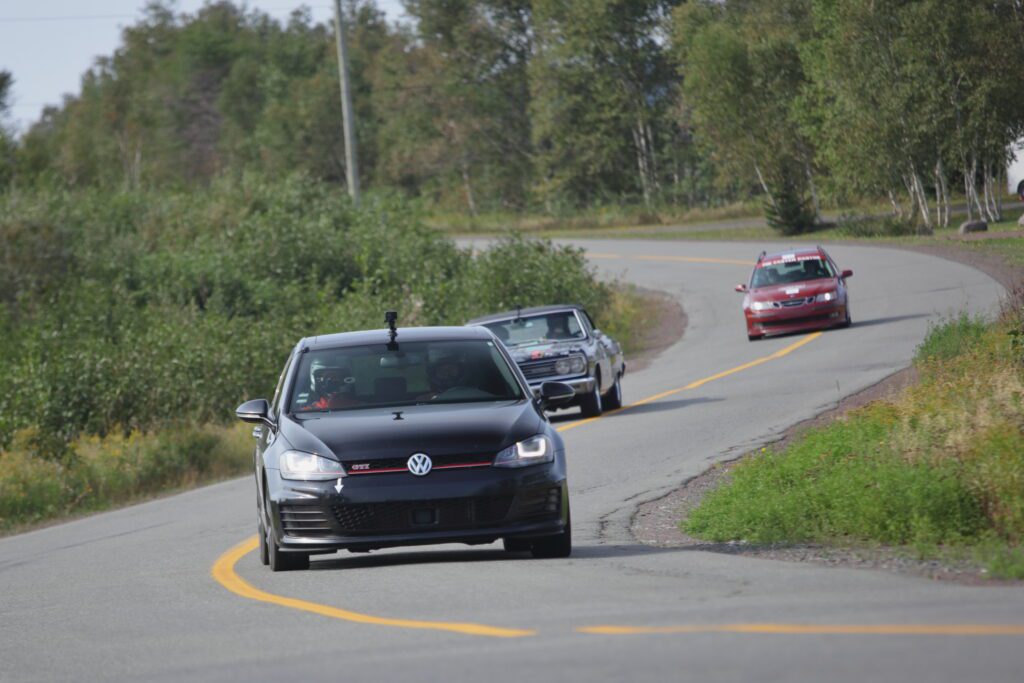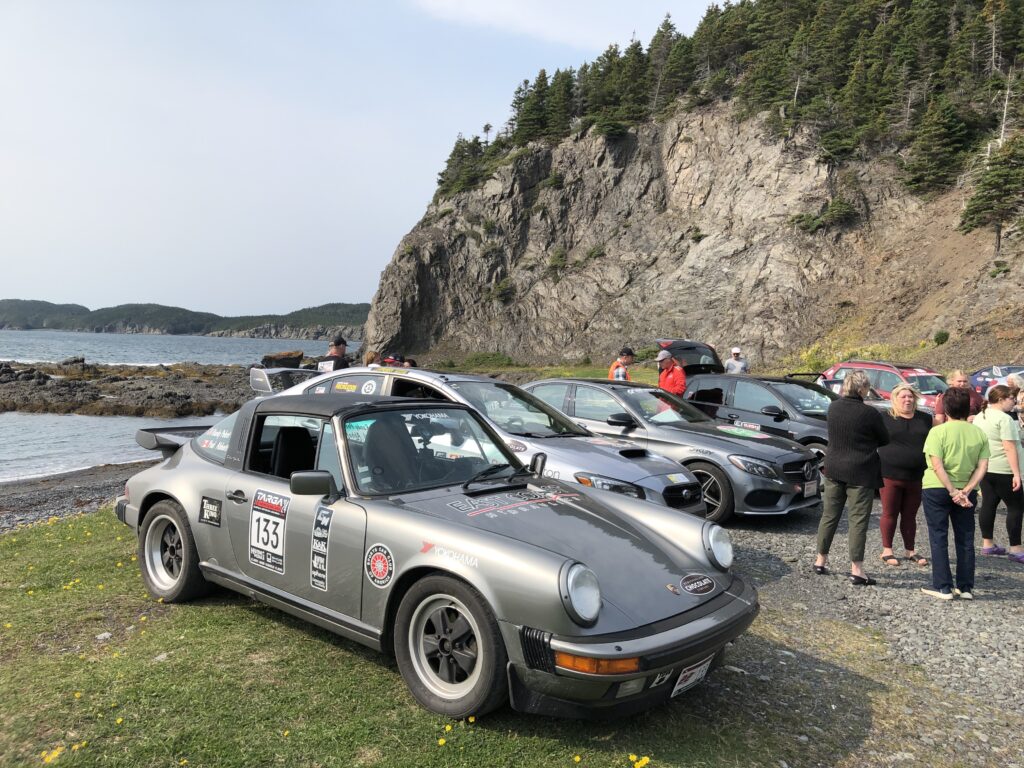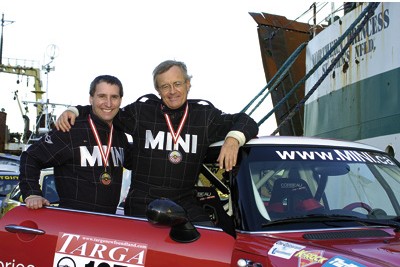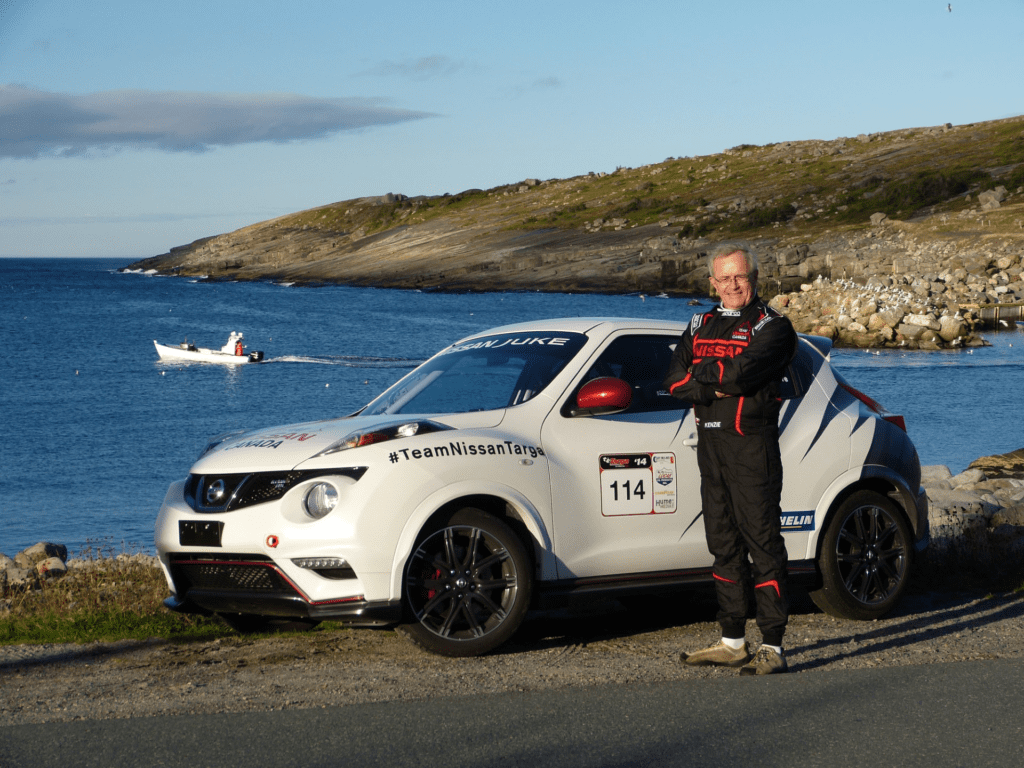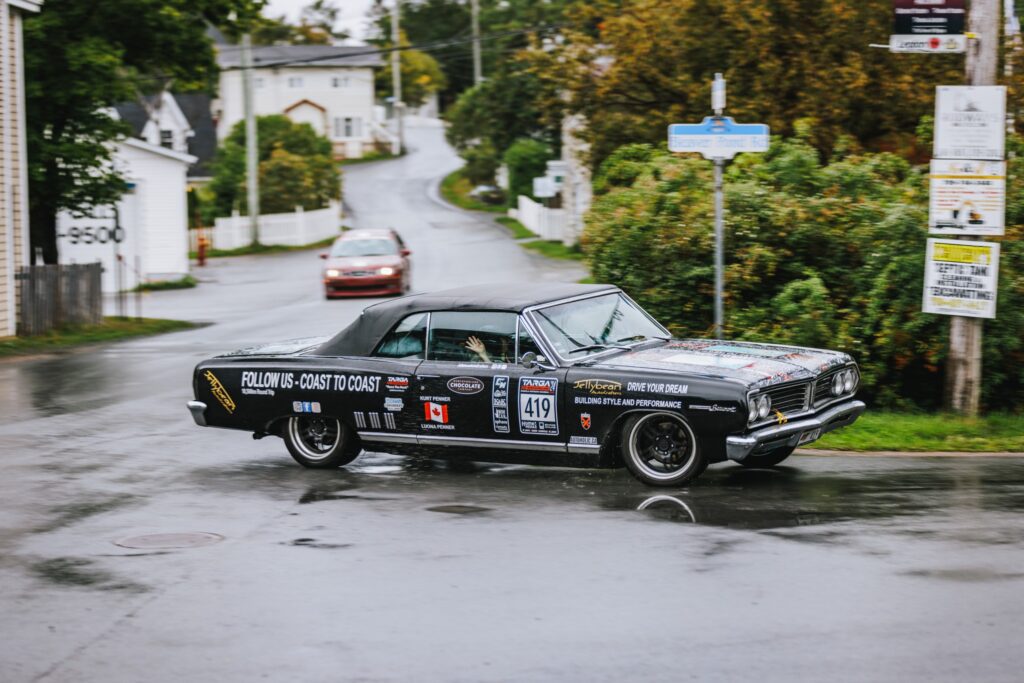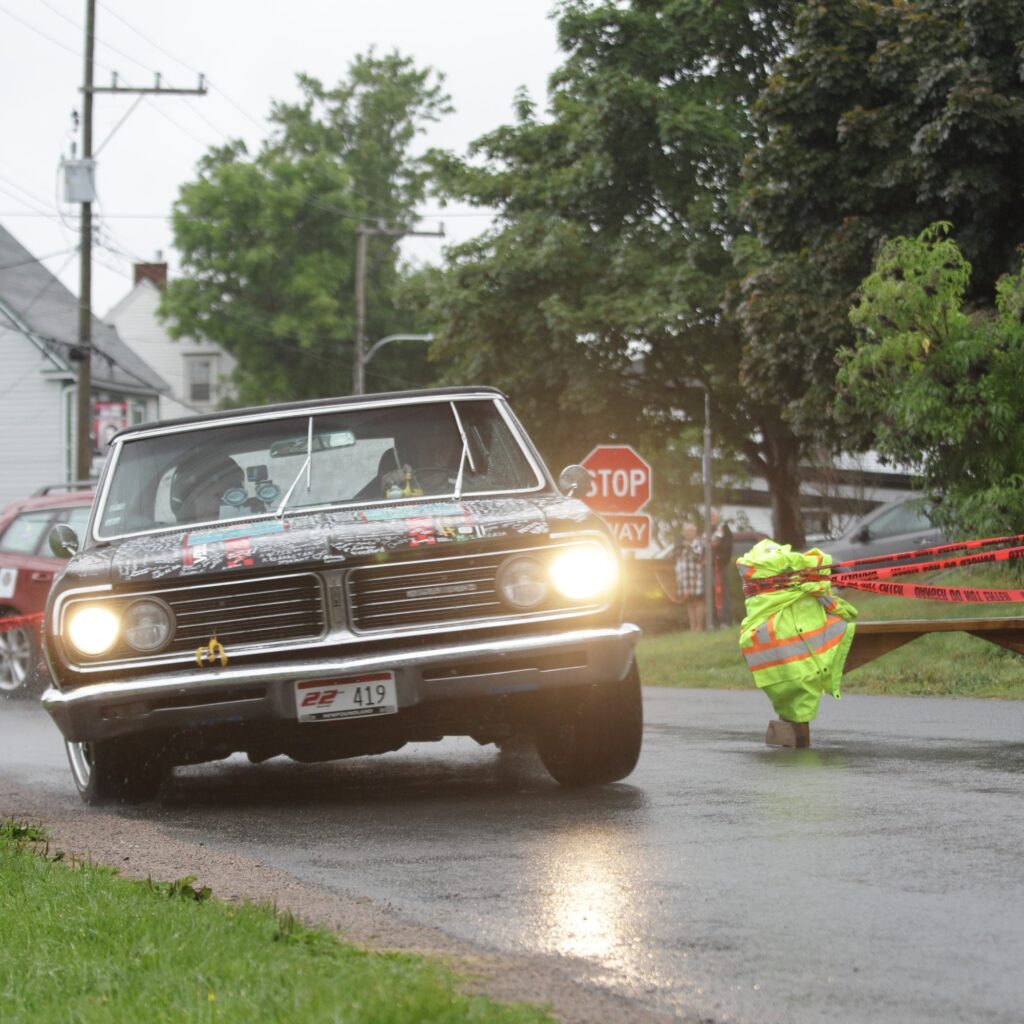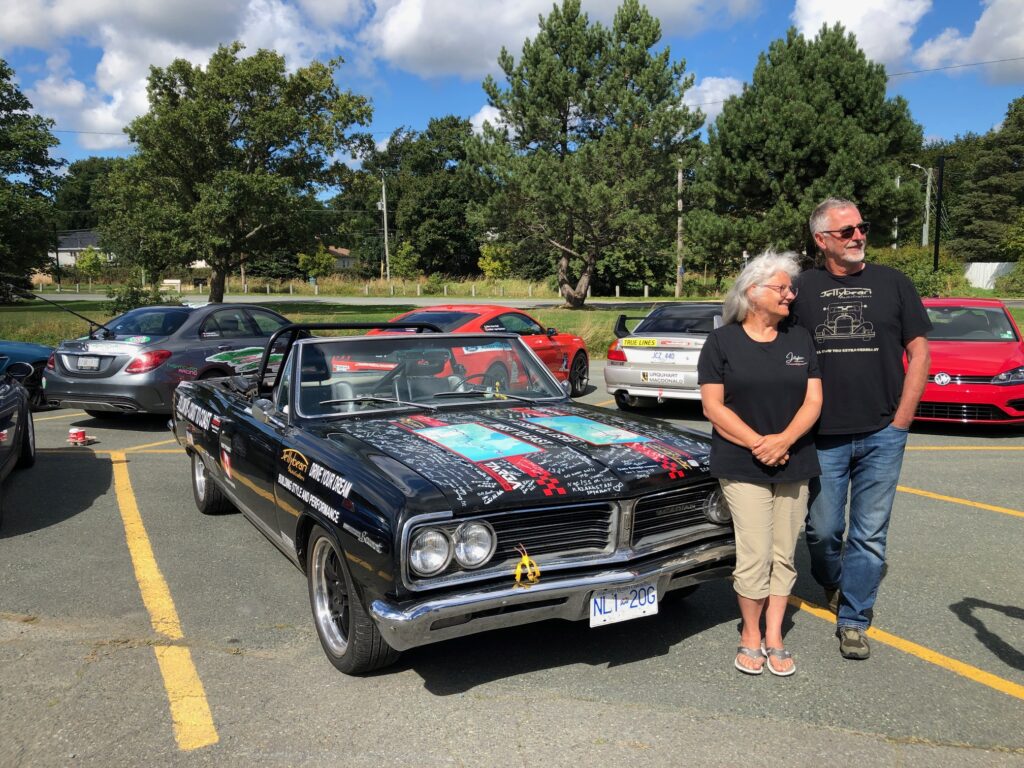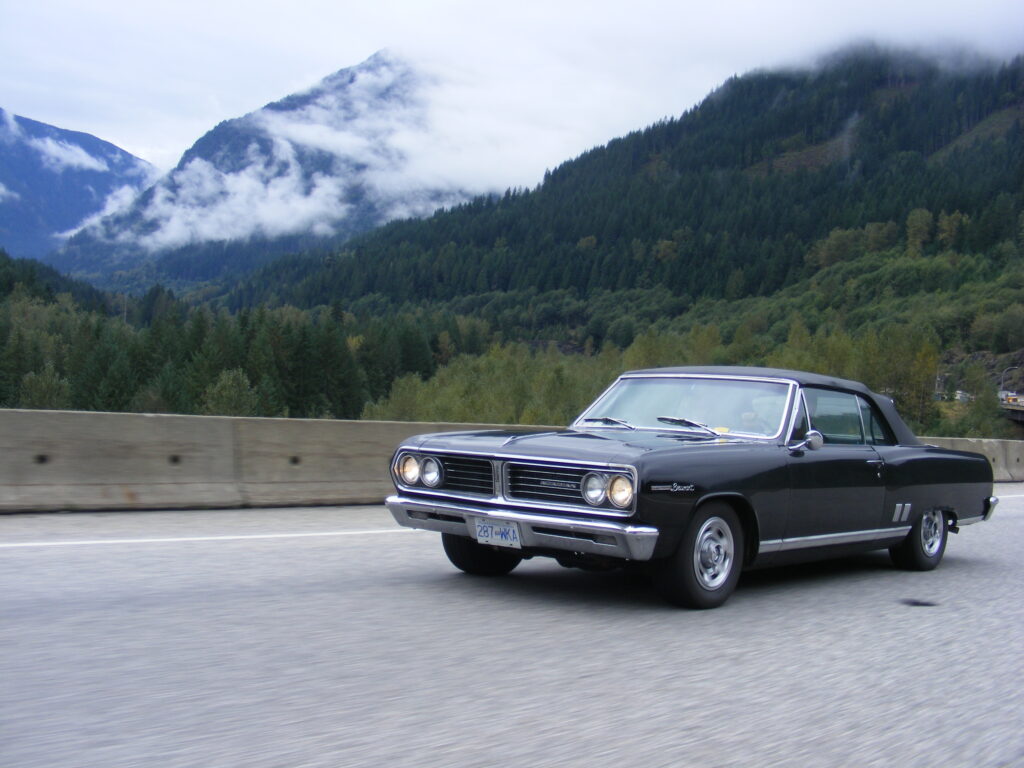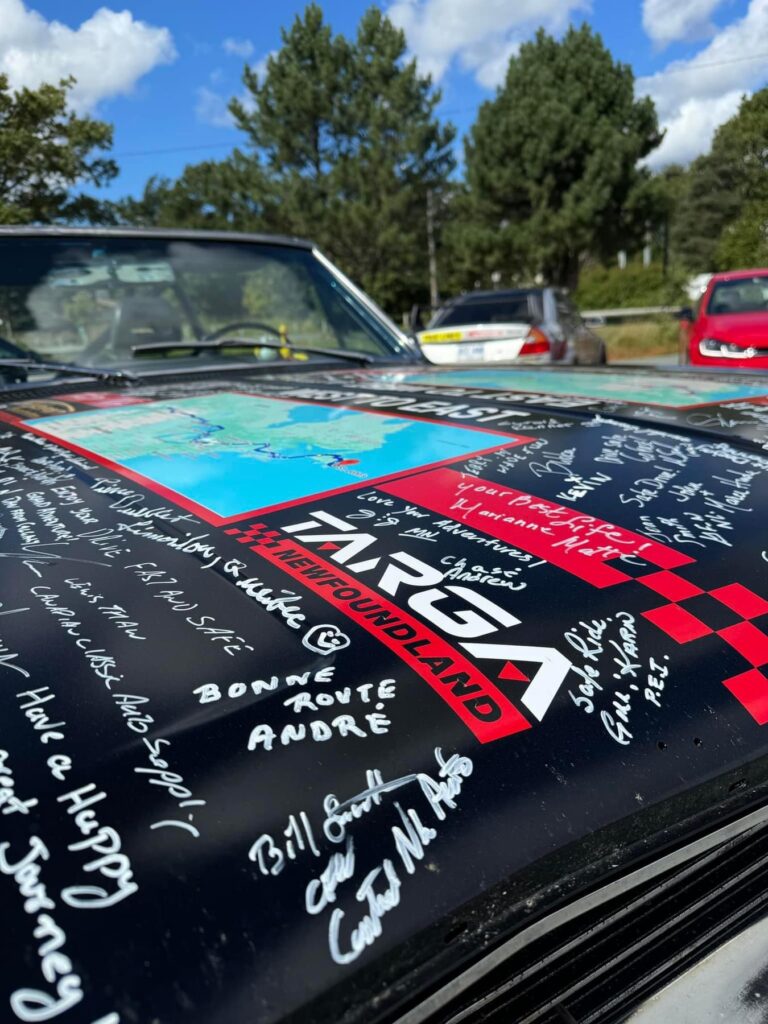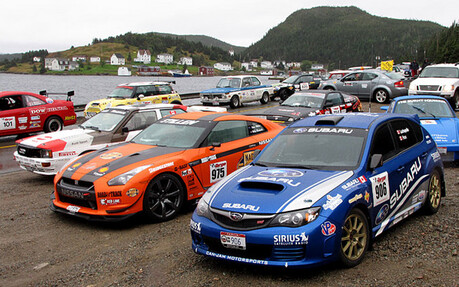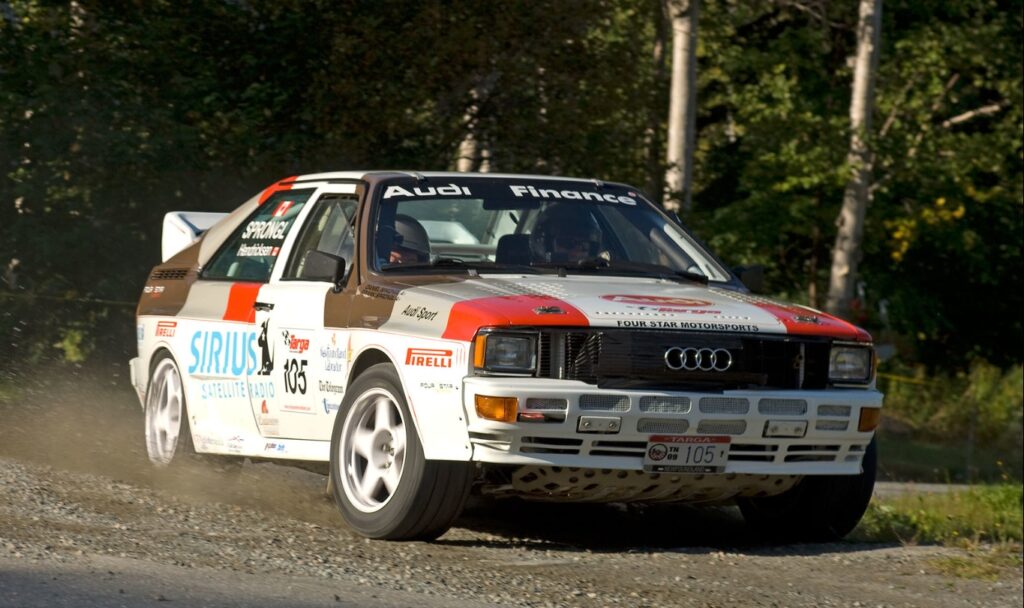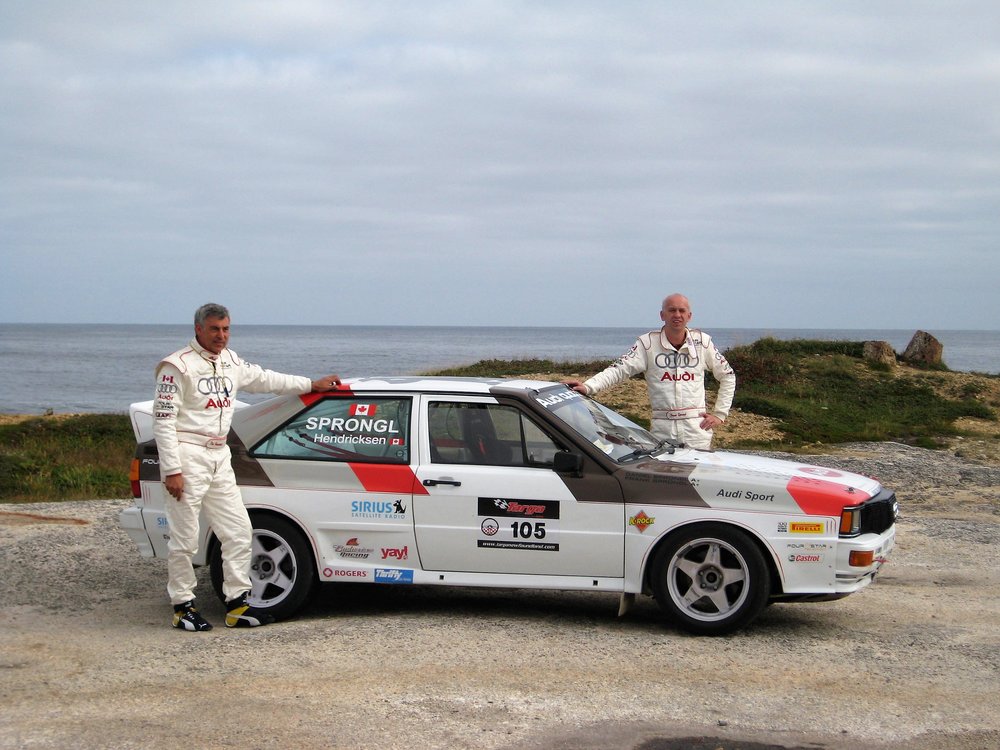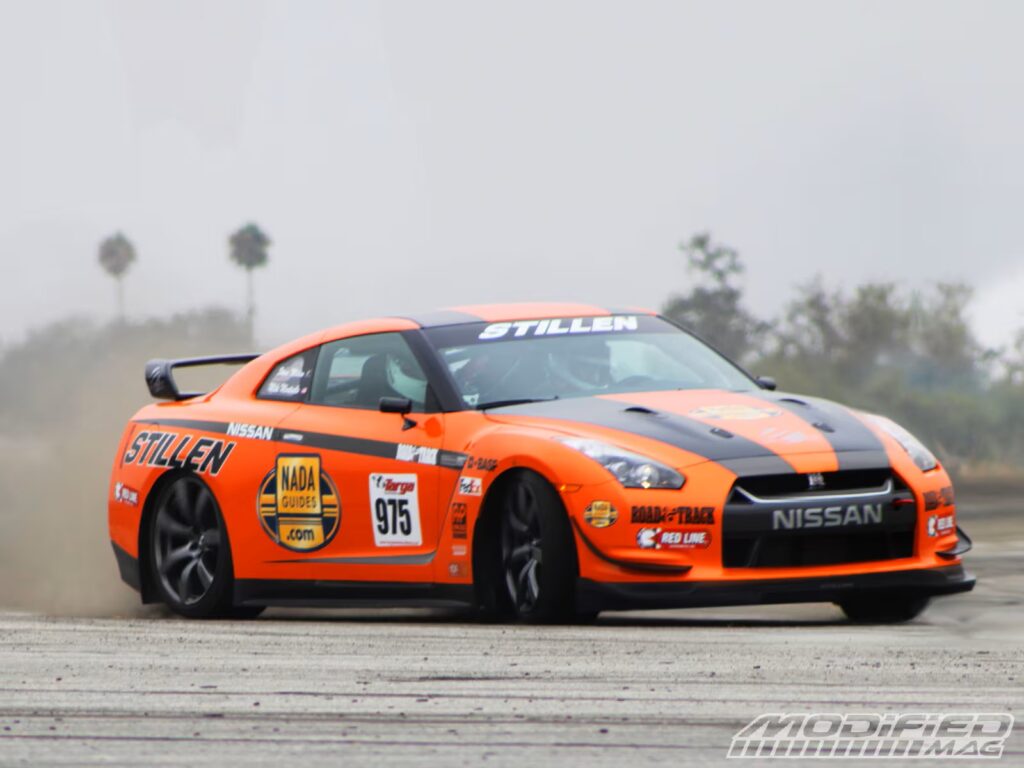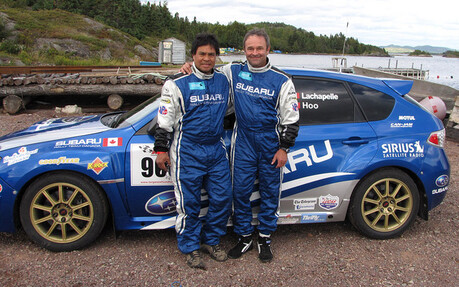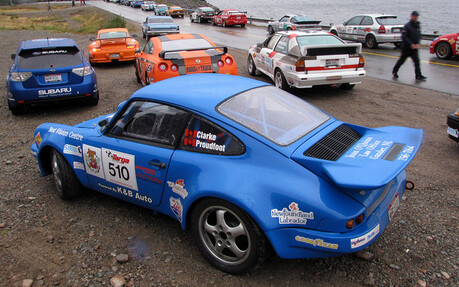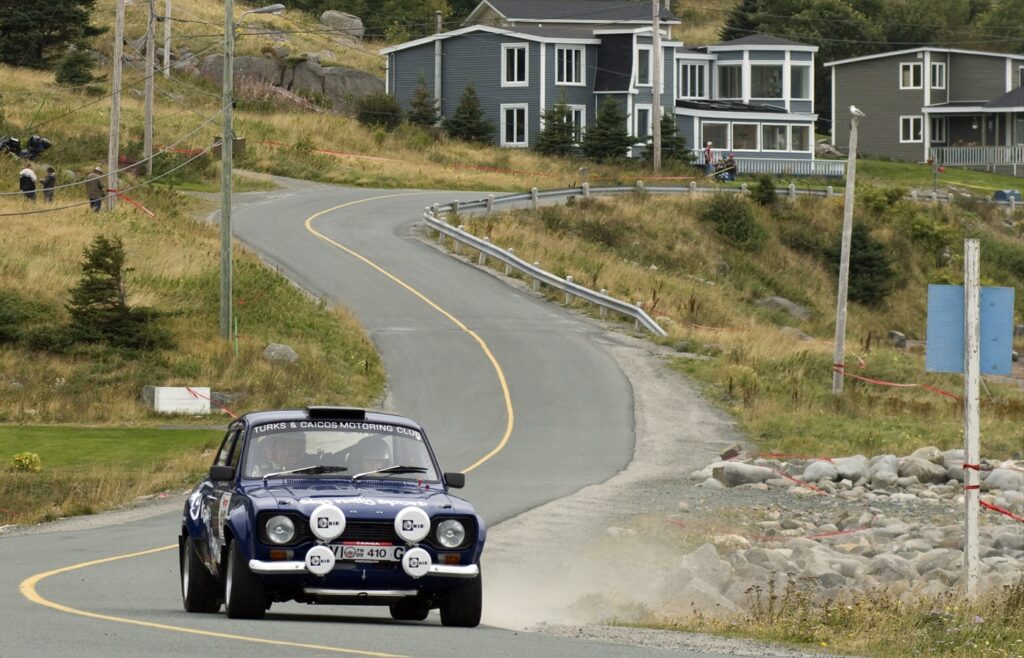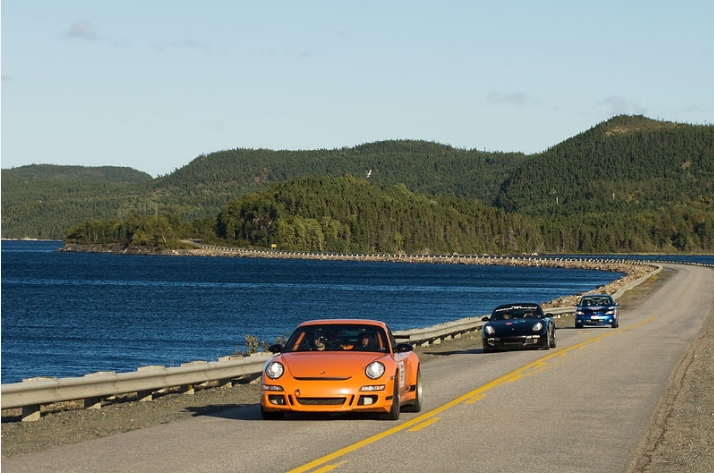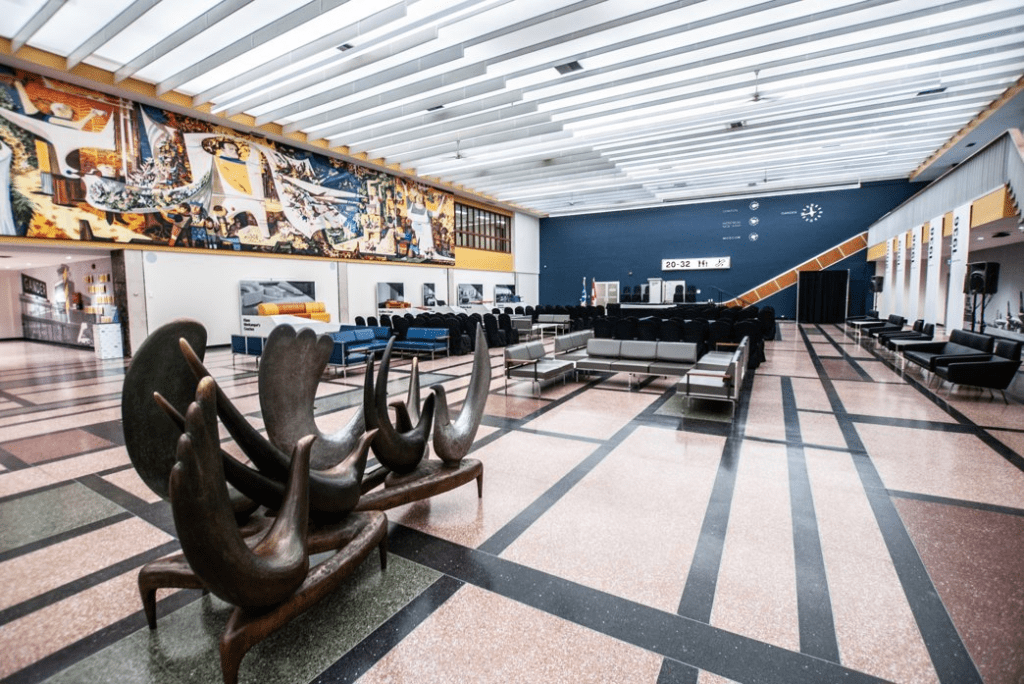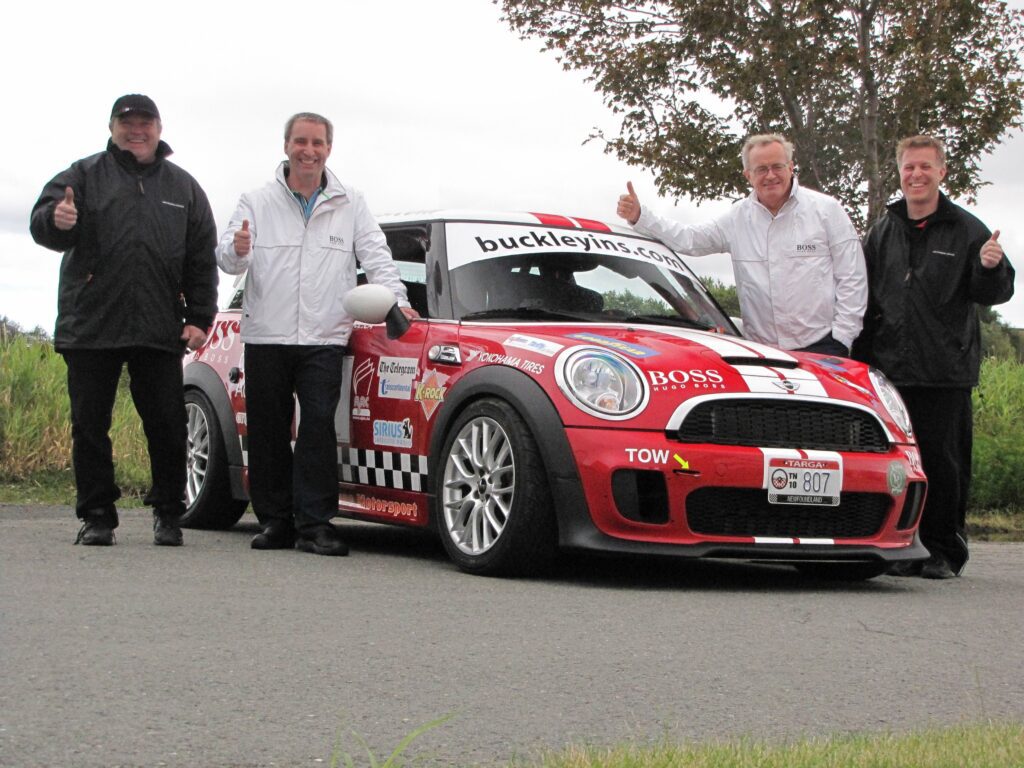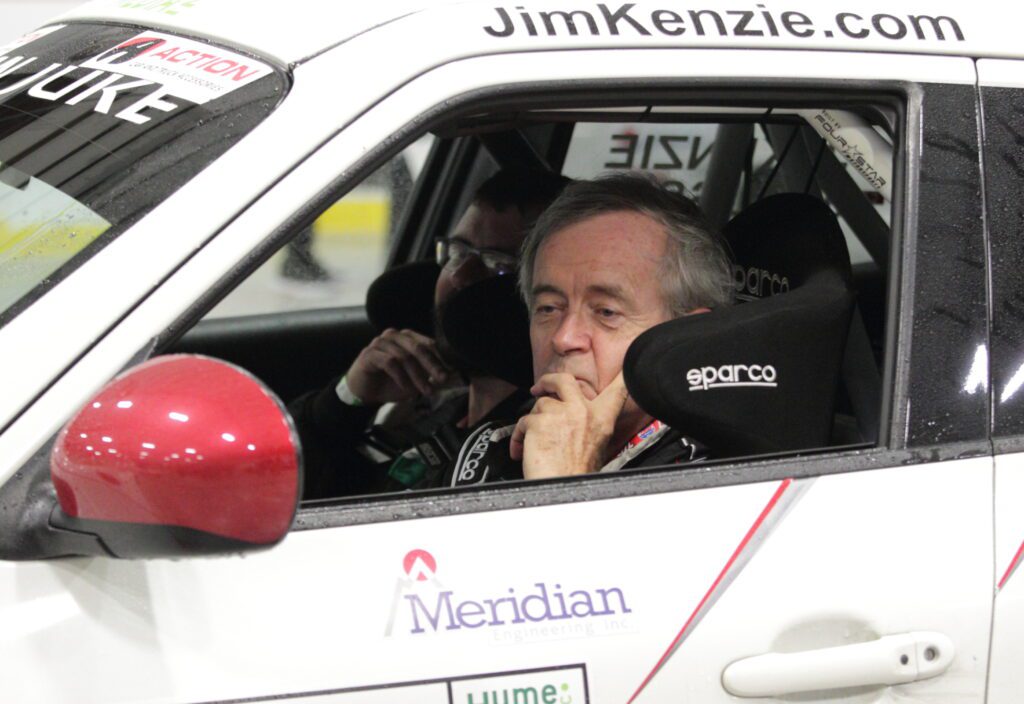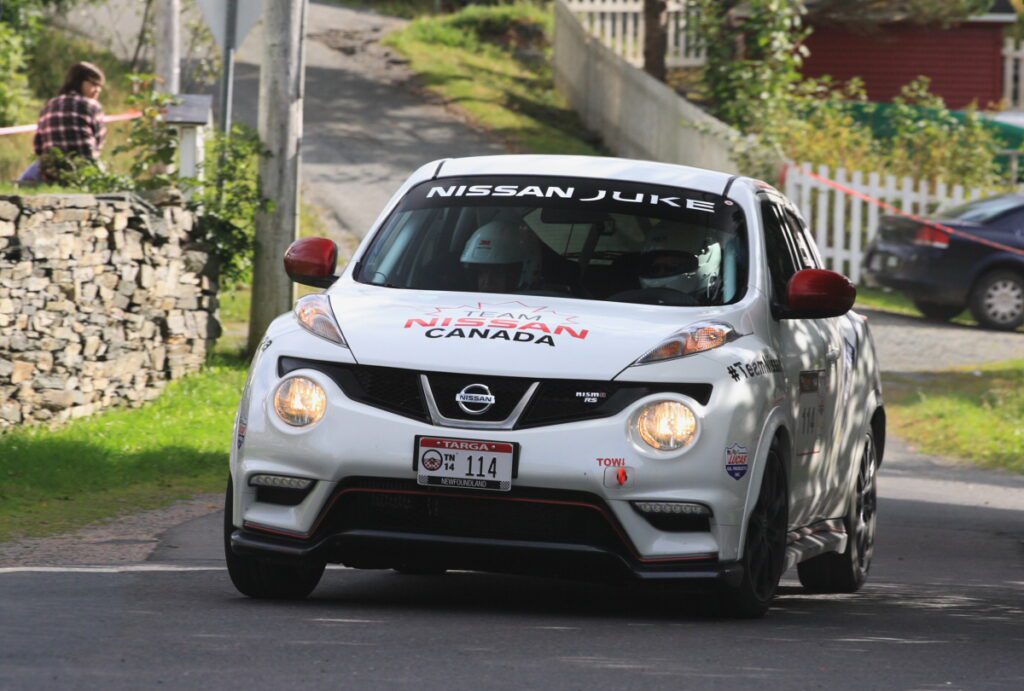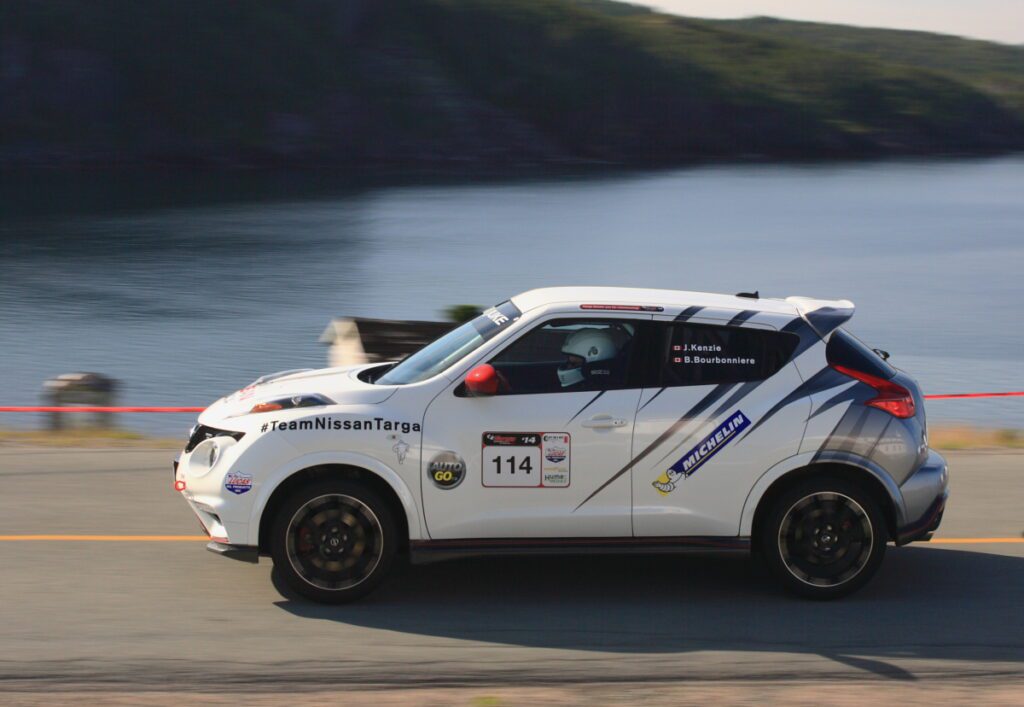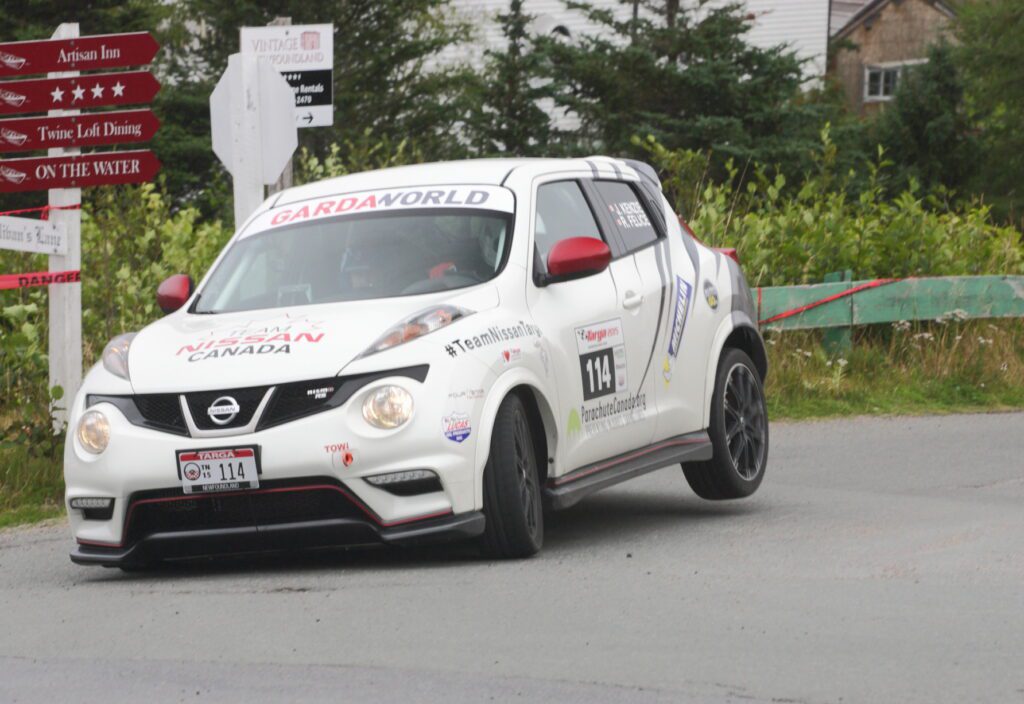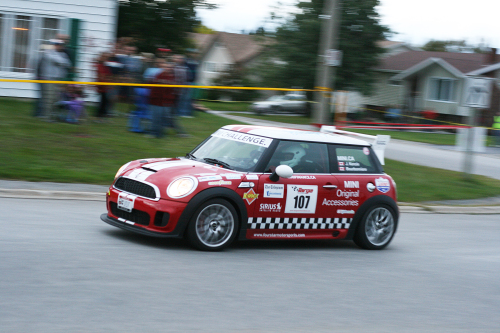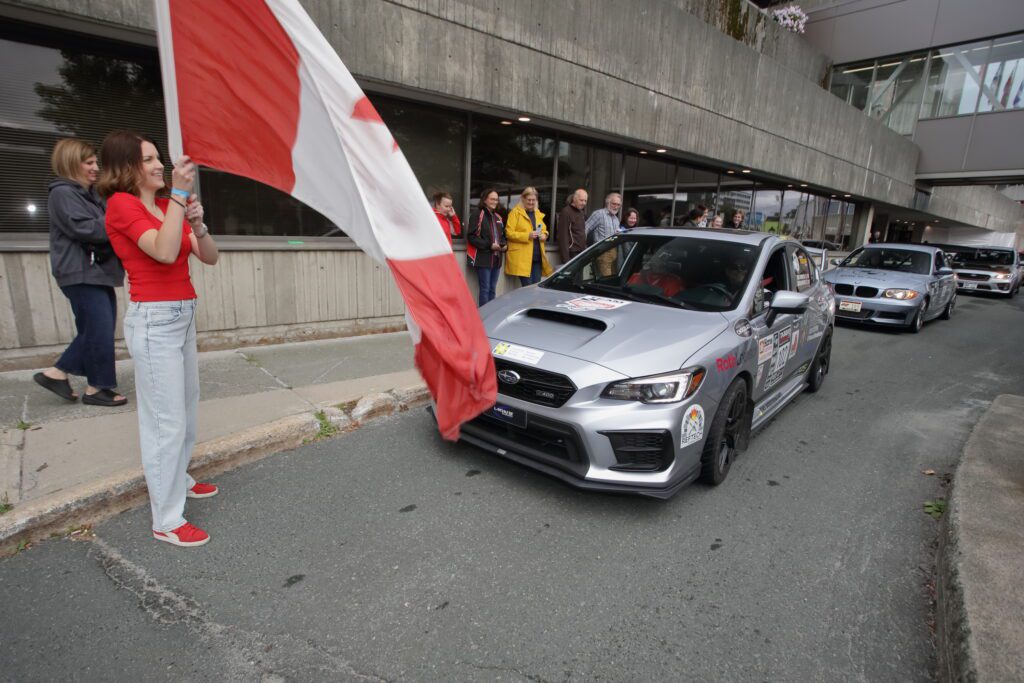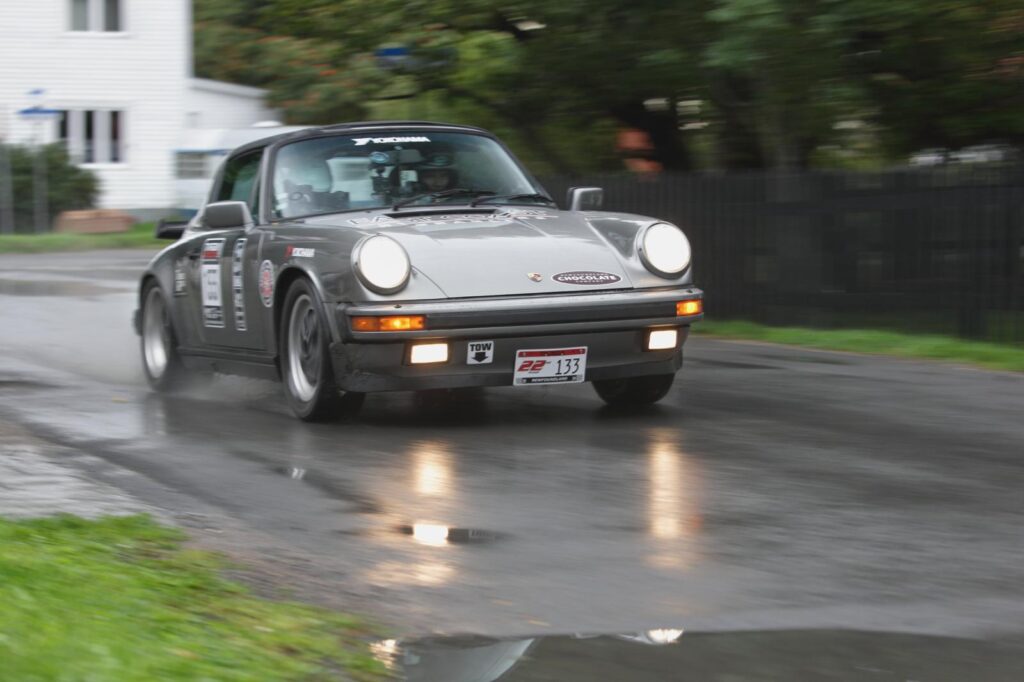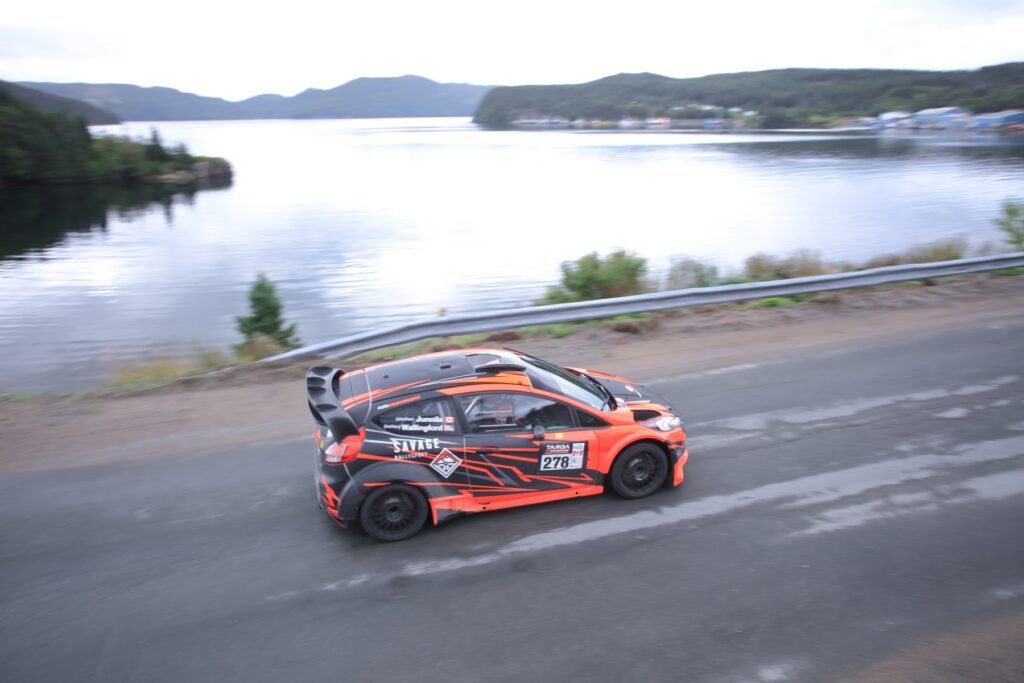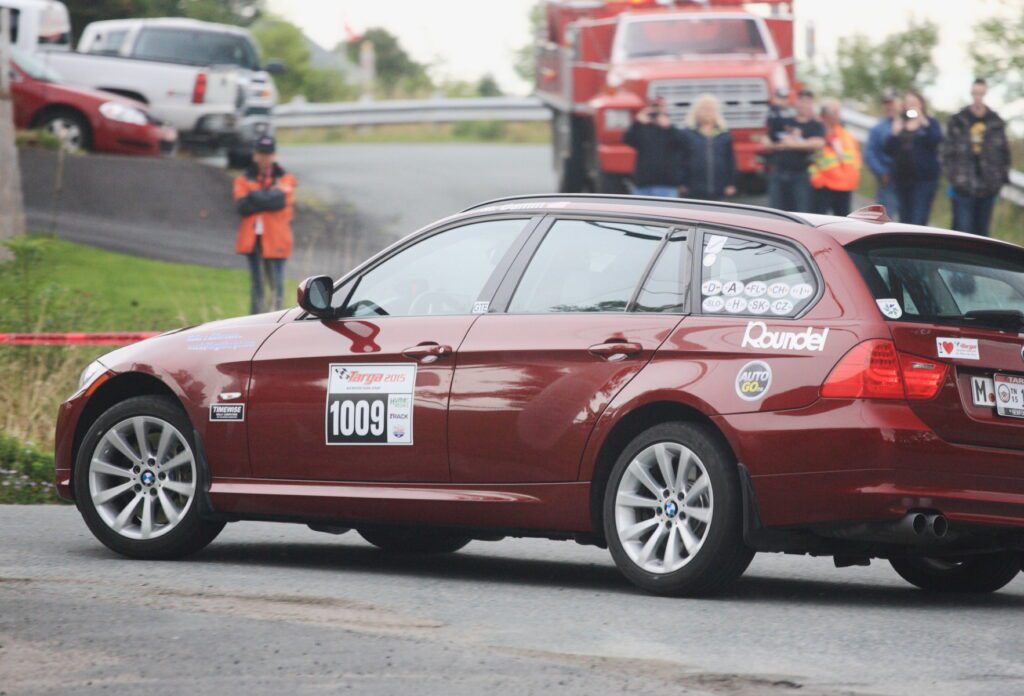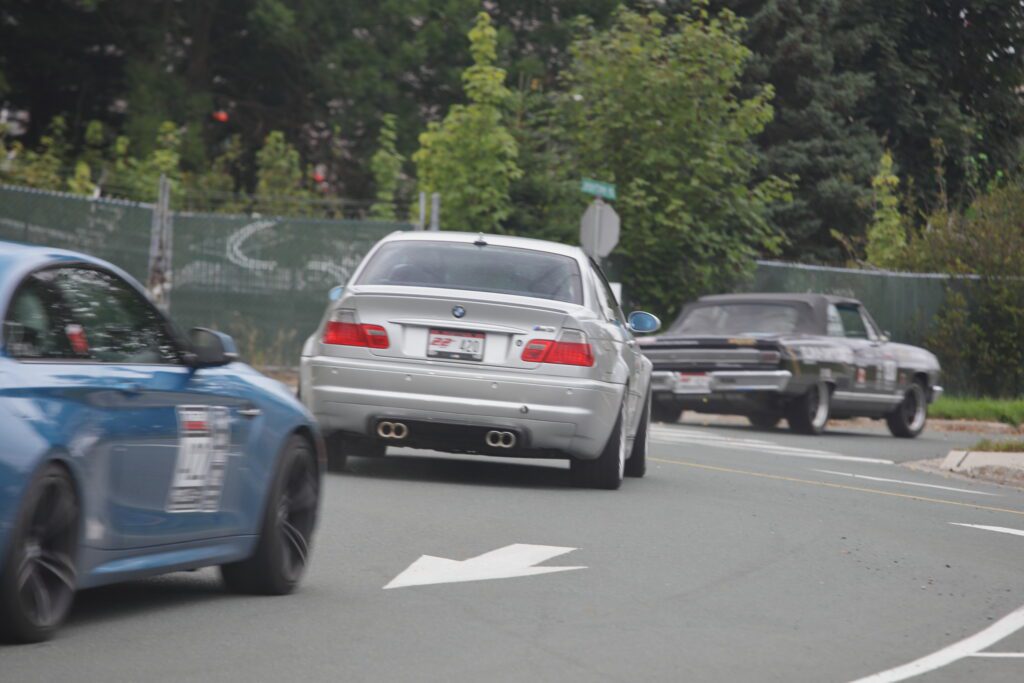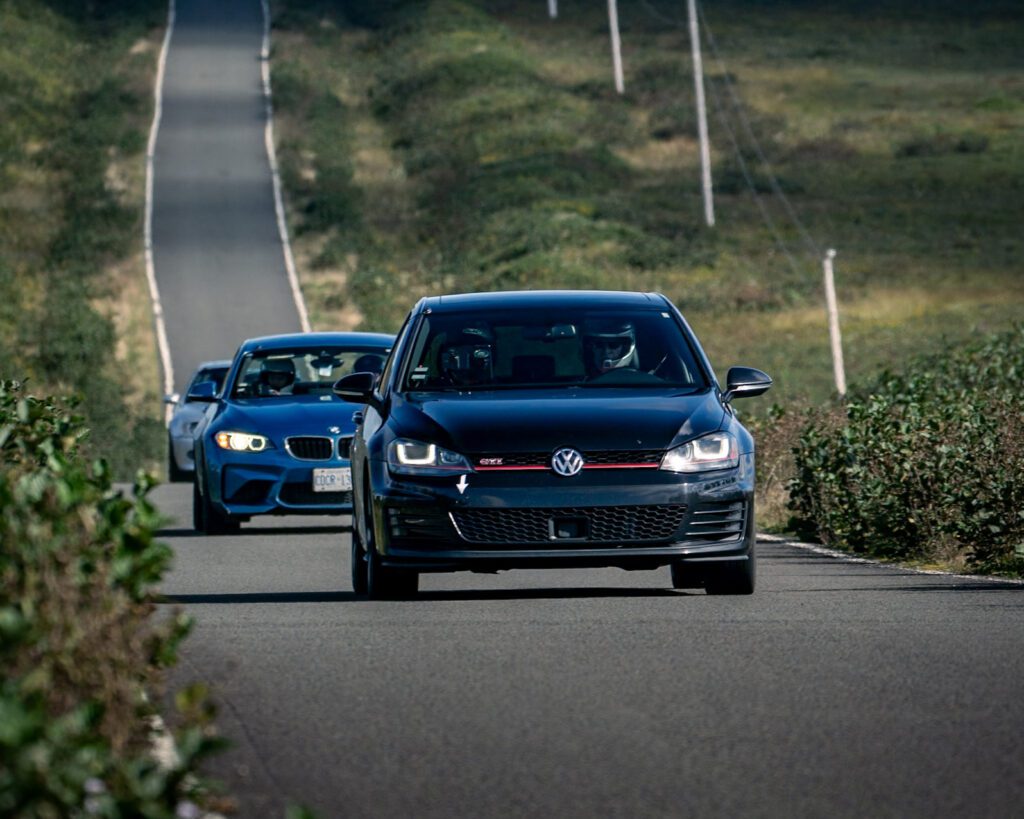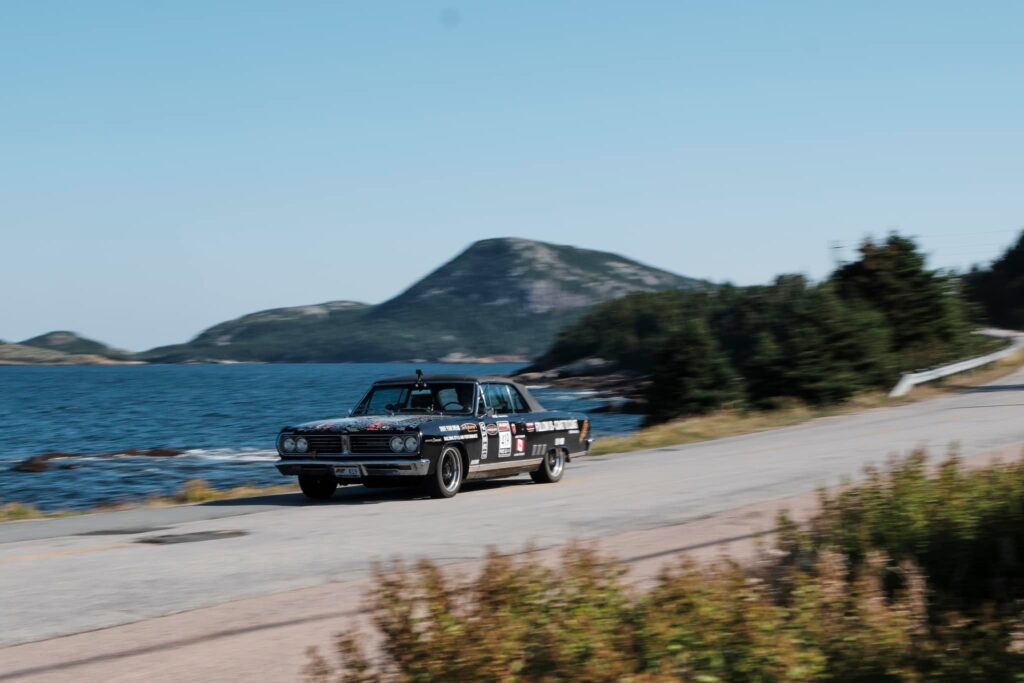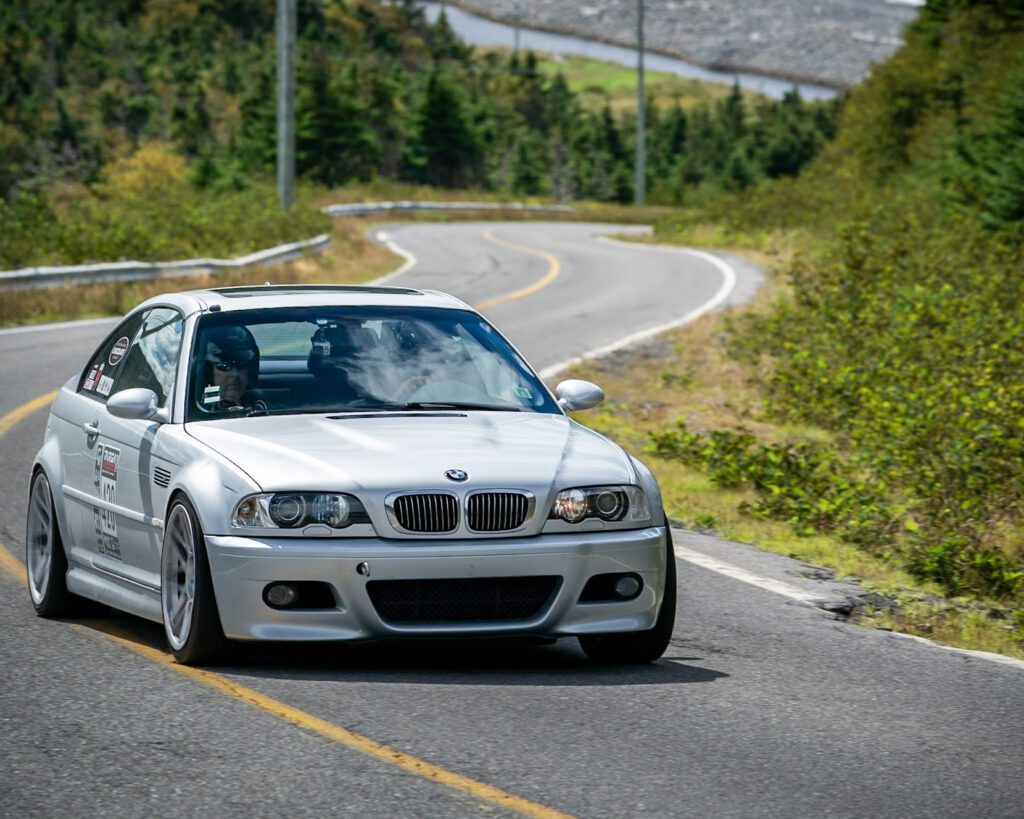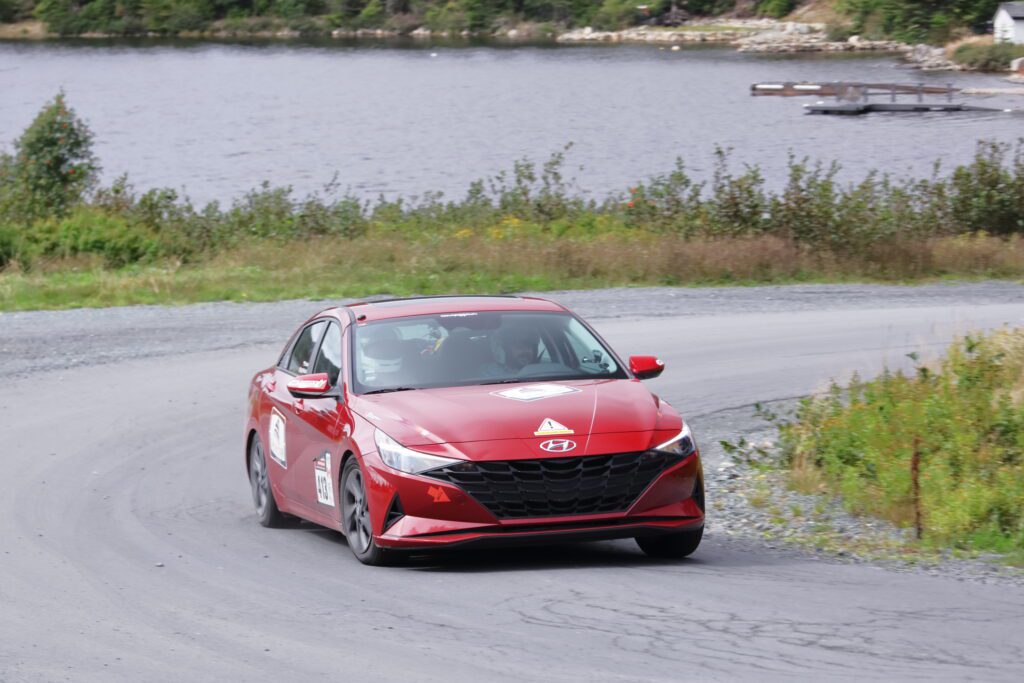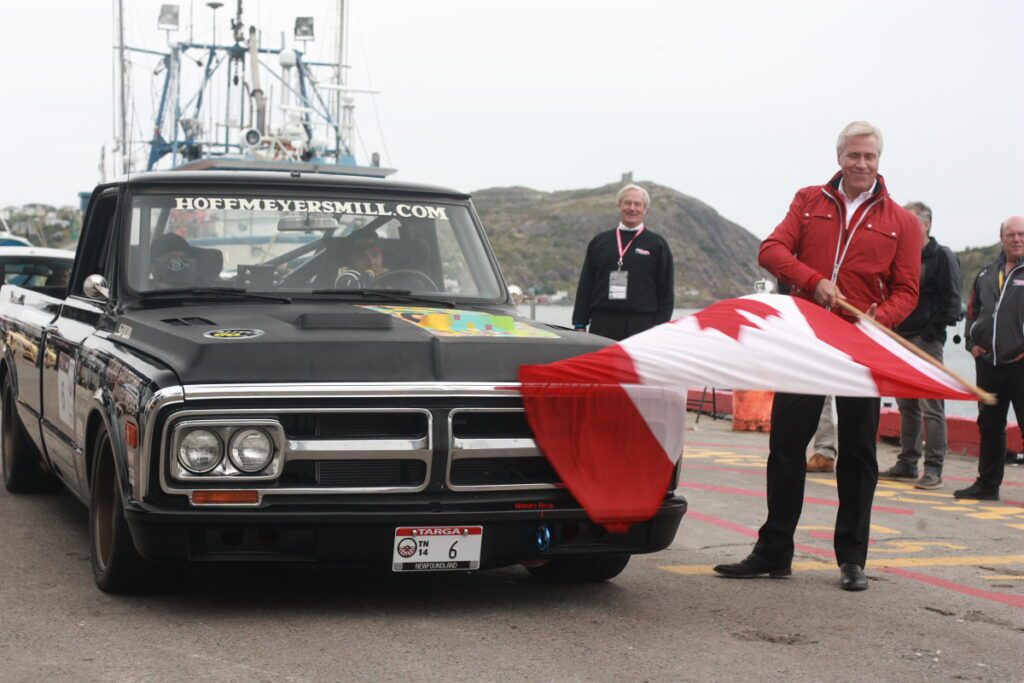
Trucks are a rare sight in Targa Newfoundland other than as support vehicles with one distinct exception – a 1971 GMC C1500 street rod pickup truck that raced in 2014 and surprised everyone except the owner. It was the first truck to ever compete in the legendary rally.
The Targa Truck was built by a father and son from Toronto, Ontario – Martin and Mark Bovey from a tired stock pickup bought for $100.
“This 1971 GMC was truly a farm truck,” wrote Mark. “My high school friend’s grandfather bought it new in 1971. He traded it in for a new truck in 1986 to the dealership where my father managed the parts department. In 1986, my friend’s uncle bought it and drove to the local fertilizer and grain plant where he drove transport trucks. My mom worked as a grain accountant there almost her entire life. The truck was abandoned beside the fertilizer plant in 1987. My buddy and I were hired to paint the warehouse and had to have the truck moved to paint a wall. And in 1988, I found it sitting in our driveway. My dad had dragged it home to keep me out of trouble and have a simple truck to drive when I was 16.”
Once they were done with it, that badass truck packed a big punch with a 427-cubic-inch V-8, six-speed manual transmission, lowered suspension and fat tires.
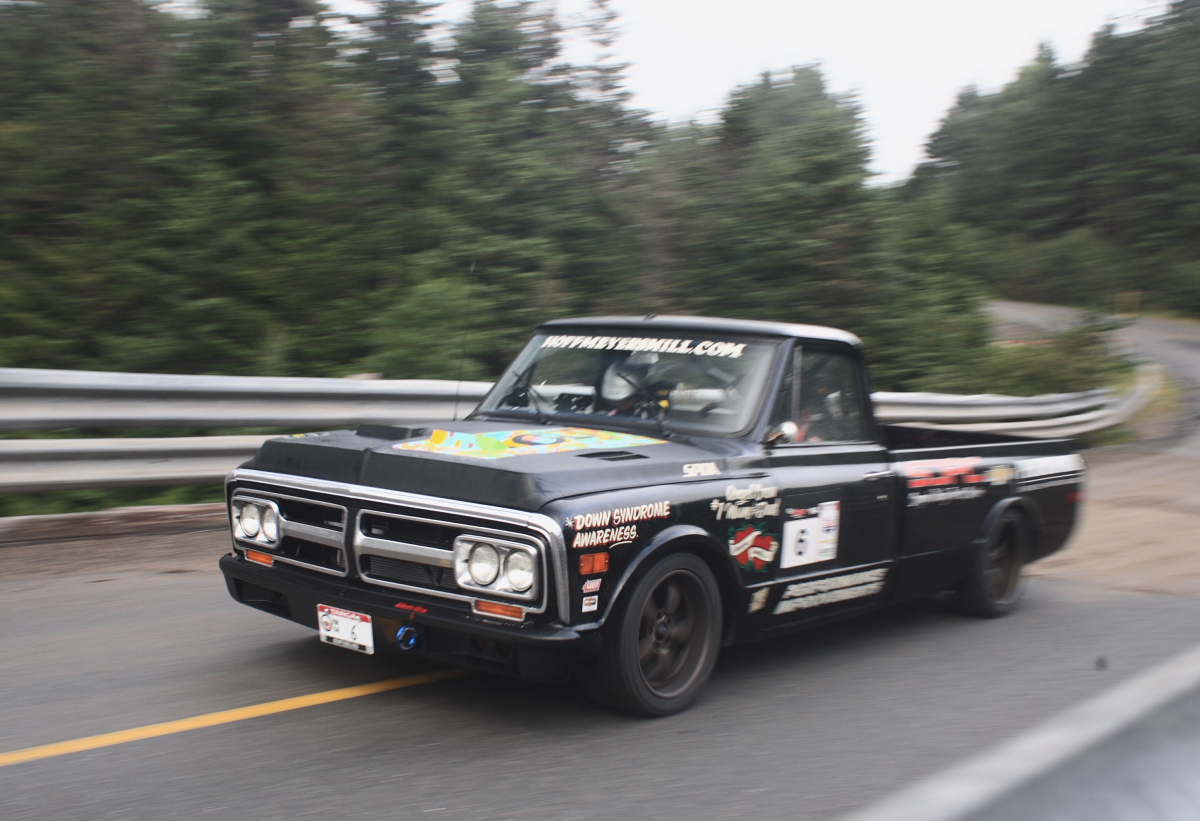
According to a recent article in Car and Driver, when the Targa Newfoundland organizing committee put out a social media post saying that they’d never had a truck compete, Bovey responded with a tongue-in-cheek message: “I can scratch that itch.”
He didn’t just scratch it, he almost won the Classic Division that year, placing a respectable second with co-driver Miles Markovic behind Jack Rogers and C.J. Strupp in a 1965 Ford Mustang while beating a Porsche 911 and a Chevy Corvette. Co-driver Miles also wrote about their Targa adventure in The Globe and Mail newspaper: Targa Newfoundland: Part street race, part rally race, part insanity – The Globe and Mail. Bovey also took his creation to track days and autocross events as well as the legendary Mount Washington hill climb.
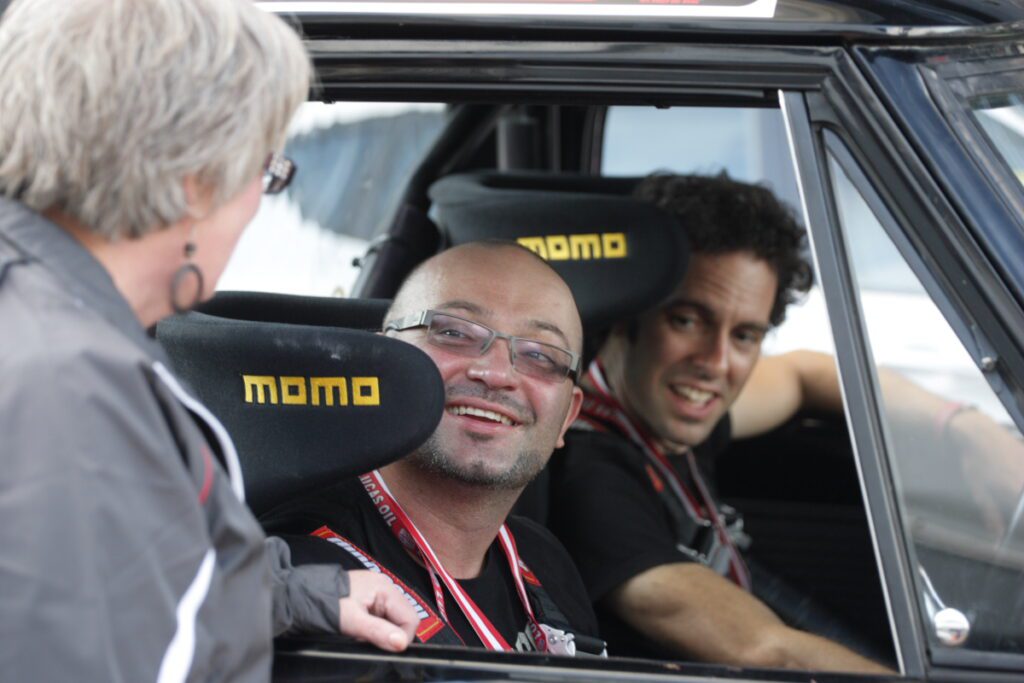
Mark explained in a post on Bring A Trailer how his street rod became a racing truck: “I started racing it on a dare. At the time I had drag raced it, land speed raced and autocross seemed like a hilarious thing to try. On my first few outings it really exceeded anyone’s expectations, myself included. It is giant, it is fun, it sounds incredible. Back then, when you showed up to an event with a truck, let alone a long bed, everyone knew you were there and everyone had strong opinions about it. Those strong opinions were fun to prove wrong. Functionally, the long wheelbase really helped with high speed stability. The events I like to do, like the Targa Newfoundland, are really rough and the wheelbase helped a lot. You could hammer on this thing exiting a corner, and at high speeds it is calm.”
After Targa, the race truck saw even more modifications. Carbon-fiber and steel body panels are mounted to a custom-fabricated tubular steel chassis that rides on a No Limit front suspension assembly, a three-link rear setup with a Watt’s linkage, adjustable coilovers, and 18” Forgeline wheels.
In 2019, a 427ci V8 was installed that features an LSX Block, a Callies rotating assembly, Wiseco forged pistons, Air Flow Research cylinder heads, an Aviad dry-sump lubrication system, and MoTeC engine management. The engine is backed by a Tranzilla T56 six-speed manual transmission, a Strange Engineering differential, and a Speedway Engineering full-floating rear axle. Additional equipment includes a Vibrant Performance exhaust system, a Radium fuel cell, a Wilwood hydraulic handbrake, AP Racing brake calipers, Hella LED headlights, racing seats, a MoTeC digital dashboard, and a fire suppression system.
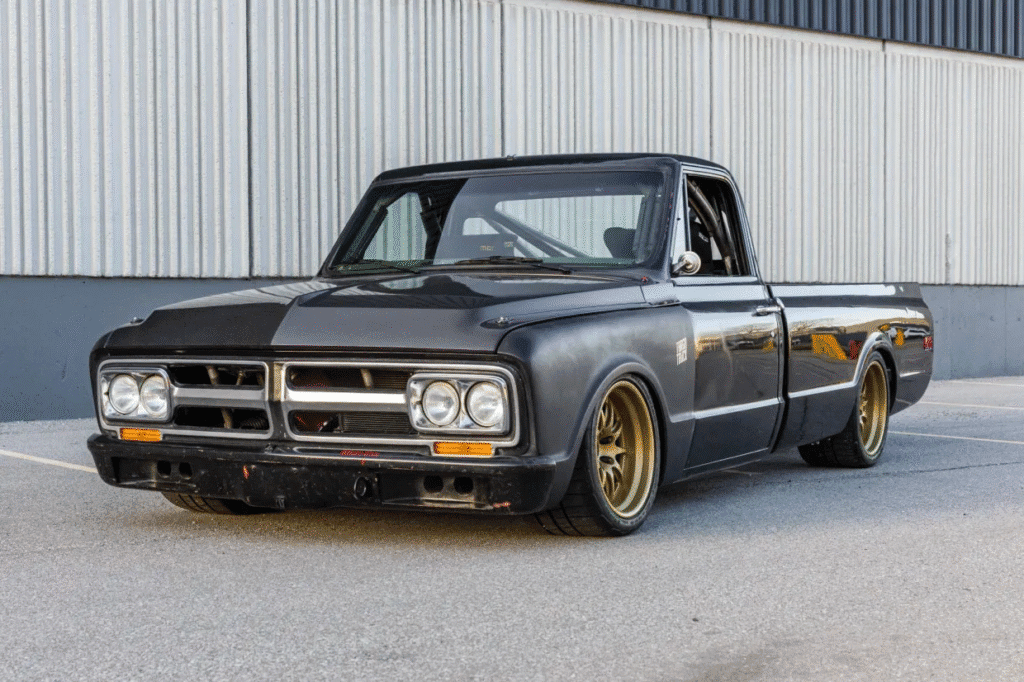
Mark has owned Targa Truck for 37 years but recently put it up for sale. “This truck has been a part of my life through a lot. Sad to see it go. My life is vastly different from when this was built, and I’m hopeful it will find a new home with someone who can use it as intended.”
You can read more about it here: Badass Targa Truck Is a Father-and-Son Project Now up for Auction, and here The old GMC pickup that took on the Targa Newfoundland as well as the listing on Bring A Trailer.
If it sells, perhaps the new owner will take another run at Targa.
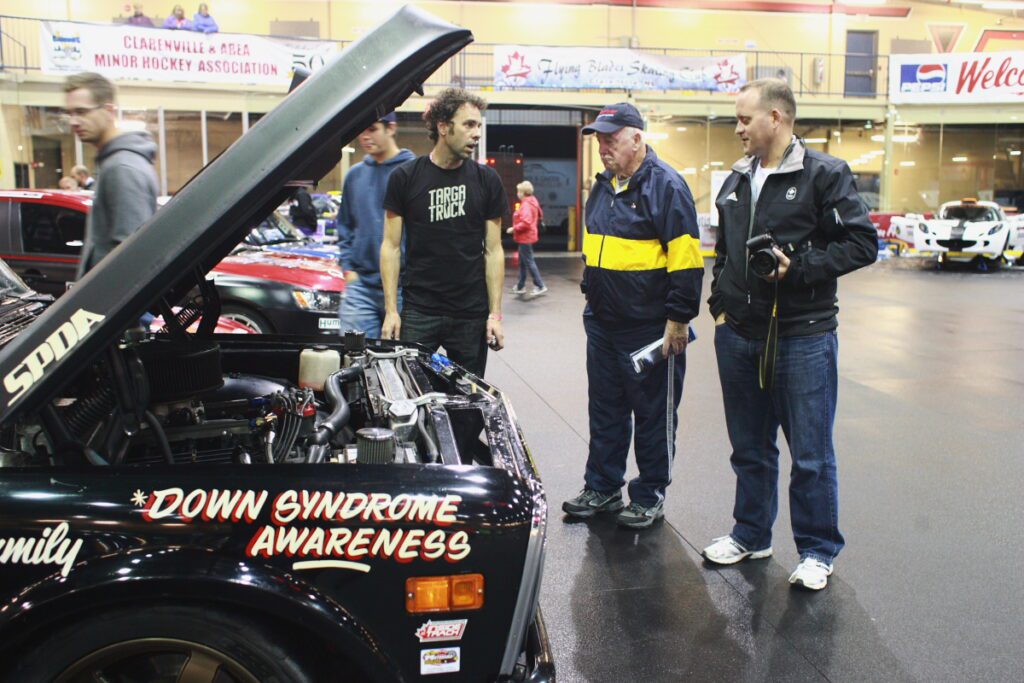

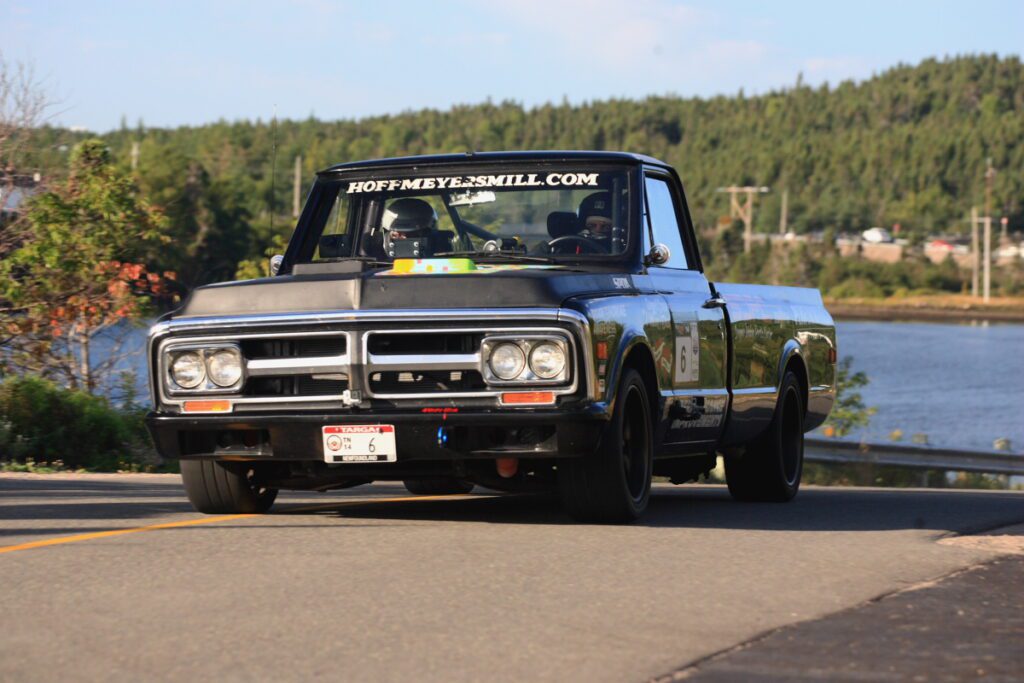
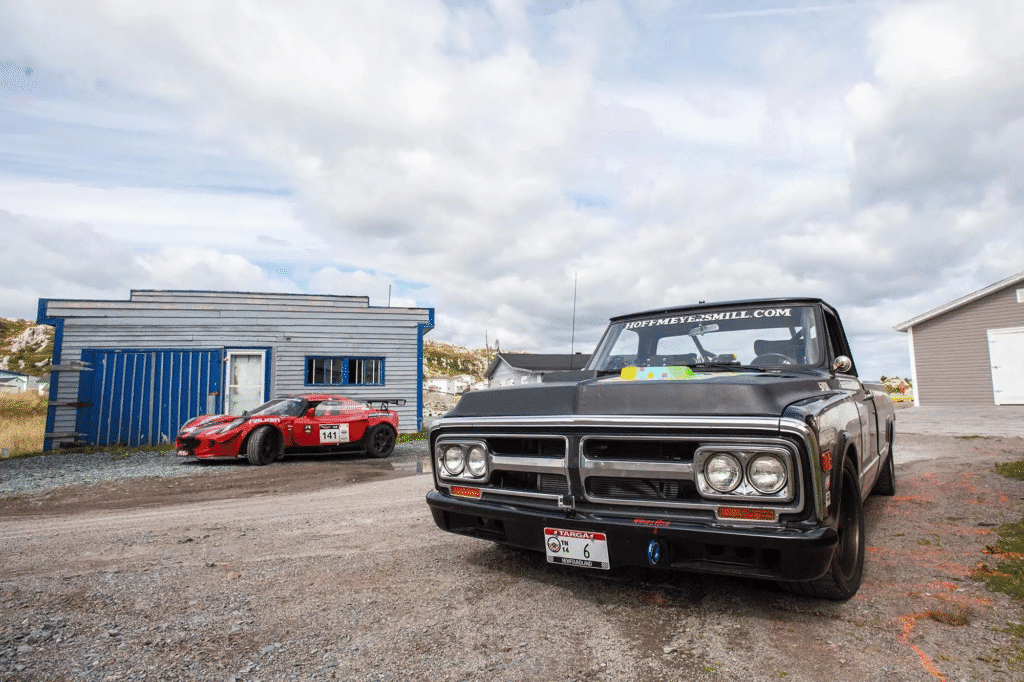
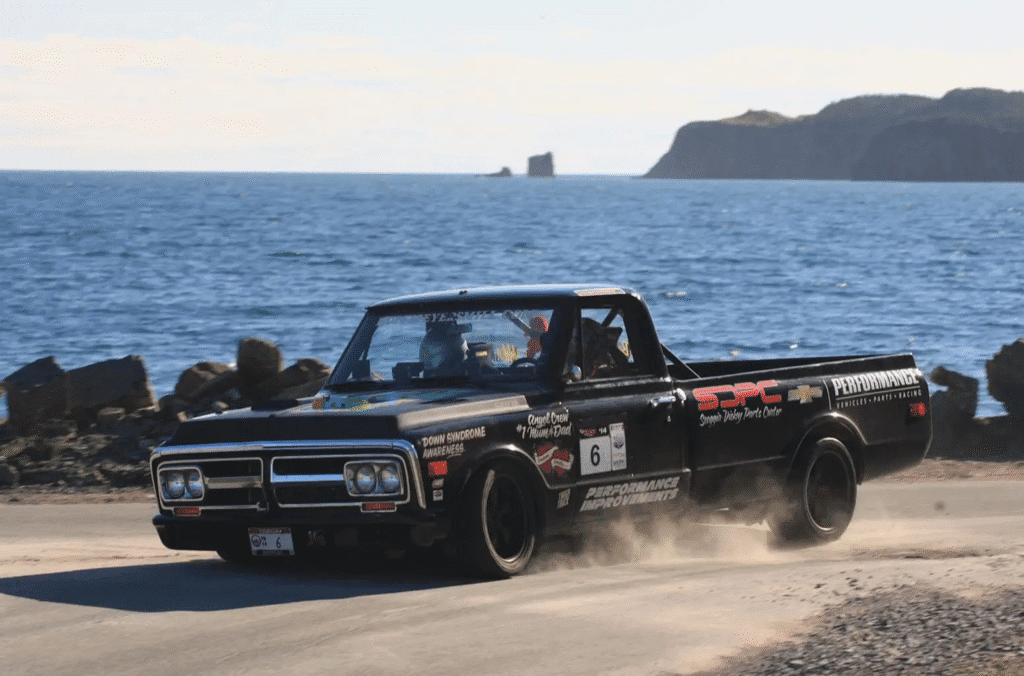
Do you have a street rod, classic, or sports car and an itch to take on Targa Newfoundland? Click the red button below and let the fun begin.
Check the Rules and Regs page for more details on what is required for each division. If you have more questions, visit our FAQ and Event Info pages or contact us at info@targanfld.com.
